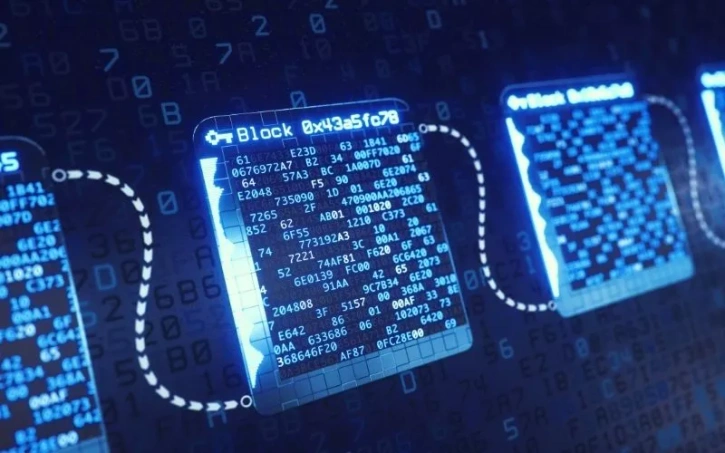The Pilot and the Banker: One Reason NFT Verification Is So Important

Who do you trust more: your banker or your pilot? If you’re like most people, the knee jerk reaction is to say your pilot. But why?
Understanding why your pilot is more trustworthy than your banker is crucial to sifting through all the shitposting and shilling on Twitter (more on signal and noise in a later article). It’ll help you find actionable information and ignore the rest. And with blockchain technology, it’s easier than ever to play detective and expose the frauds.
In this article, we’ll look at how potential risk transfer during black swan events should be an immediate red flag when acting on advice, why Twitter’s hexagon frames for verified NFTs are more important than you think, and how to sift through the noise to find actionable advice.
Risk Transfer in the Event of a Black Swan Event
You’re right. You should trust your pilot more than your banker. Not because she went to some fancy school or because pilots are all ethical and honorable people. It’s because she has skin in the game.
Skin in the game (taken from the book of the same name by Nassim Taleb) boils down to the inability to push off consequences onto others when something you’ve suggested or recommended goes wrong. During a black swan event, which is completely unpredictable and has potentially severe consequences for those involved, risk transfer is impossible.
Consider the pilot.
There are risks involved in air travel. Every time the plane takes off, something could go wrong. The engines could fail. Severe weather could inhibit visibility. The maintenance engineers could’ve slacked on the job. Whatever the reason, we all know flying is, to a certain degree, dangerous.
But we accept these risks because the convenience of traveling quickly across the world outweighs the small chance of a plane crashing. And the pilot accepts the risks, too – far more frequently. He flies every day.
If the plane does crash, can the pilot transfer his risk to someone else? Not unless he has magical body swapping powers. He’s going down with the plane.
That’s skin in the game. When the pilot tells you the plane is safe, as long as he is going up into the air with you, you should probably trust him. He has just as much to lose from the downside of a plane crash as you do.
Now, consider the banker.
There are risks involved in lending and borrowing money. Borrowers can default on their loans. Banks can seize collateral, but collateral – in certain unpredictable and highly unlikely events – can lose all its value.
We saw a similar situation with the 2007 banking crisis and the 2008 financial crisis, which led to the Great Recession. What actually happened here is not that important, but in short: hedge funds and banks created mortgage-backed securities, insurance companies covered them with credit default swaps, the Federal Reserve skyrocketed adjustable mortgage interest rates, home prices went down, and borrowers defaulted on their loans.
What happened next is much more telling. In order to restore public confidence in the financial sector, President George W. Bush signed into law the Emergency Economic Stabilization Act in 2008. Nearly $1 trillion of taxpayer money went to purchase toxic assets from banks. The U.S. Government bailed out the banks.
Does the banker have skin in the game? He tells you the mortgage-backed securities are safe. He encourages you to borrow more money. But what happens in the event of a catastrophic and unpredictable event? The Federal Reserve dramatically raises adjustable mortgage interest rates, and who loses?
You lose, and the banks get bailed out. They reap the benefits when all goes smoothly. But when things take a turn for the worse, they transfer risk to someone else: governments and taxpayers.
The pilot is more trustworthy than the banker because she wins when you win and loses when you lose. The balance of risk when the inevitable black swan event happens is equal. The banker, on the other hand, wins when you win and wins when you lose, or at least doesn’t lose when you lose.
Be weary of advice given by someone who doesn’t have skin in the game.
Twitter’s Hexagon Frames Are More Important Than You Think
Twitter’s newest pfp (profile picture) verification tool is quirky and fun. It changes the traditional Twitter pfp circle into a hexagon if you prove the NFT you’re using as your pfp is actually yours using the blockchain to verify that the crypto wallet you’ve connected holds the pfp.
But it’s more than a quirky and fun social media experiment. It’s the first step toward near-instant, visual bullshit detection.
There are plenty of issues with Twitter’s approach, of course. Someone could mint an exact replica (a right-click and saved version) of a CryptoPunk or Bored Ape Yacht Club (BAYC) NFT and “verify” that the replica (pretending to be the real thing) exists in his wallet. And as long as this possibility exists, the tool is relatively worthless. But bullshit detection will get better over time.
The end goal should be creating instant visual cues that confirm the veracity of online information. And with blockchain technology, that is easier than ever.
With instant bullshit detection, you can make more informed decisions about who to trust and where to put your money. Good information is better than no information. But no information is better than bad information.
Quickly filtering out bad information and untrustworthy people is crucial to understanding a market. And Twitter is helping make that possible. We’re not there yet, but this is a big step toward holding public figures accountable for intentional deception.
It is worth noting that just because someone does have a verified BAYC pfp does not make them credible, even if that BAYC NFT is real and owned by them. One instance of truth does not prove someone is honest, but one instance of deception does prove someone is dishonest.
This is how quick, visual NFT verification tools can help protect you from fraudulent or misleading advice and instantly check if someone actually has skin in the game.
Shut Up and Show Me Your Wallet
Why does NFT verification and blockchain transparency matter so much? Because it helps to quickly sift through noise.
In Taleb’s own words, “Don’t tell me what you think, tell me what you have in your portfolio.”
Shut up, and show me your wallet.
NFT verification makes finding someone’s holdings much easier. It is, of course, possible to create secondary MetaMask wallets. Just because someone doesn’t have an NFT in one of their wallets doesn’t mean they don’t hold it somewhere else. But if they’re shilling an NFT project, it’s likely they’re not concealing their ownership of that same NFT.
It all comes back to having skin in the game. The pilot is the influencer or advisor who says BAYC is the best NFT to hold and has five in her wallet. The banker is the influencer or advisor who says Doodles is the best NFT to hold with one in his wallet that was bought three days ago and five BAYC also in his wallet.
NFTs are risky. Cryptocurrencies are risky (even stablecoins but less so than speculative assets). Anyone who tells you otherwise is pumping their bags.
When figuring out who to trust in this fast-paced space, ask yourself what they have to gain if their advice comes true, but more importantly, what they have to lose if it doesn’t. How invested are they personally? Will they go down with the plane? Or can they transfer risk during a black swan event? Trust the people on the plane with you.



